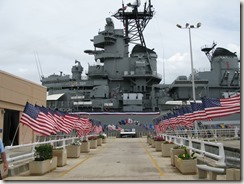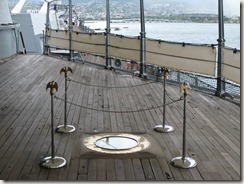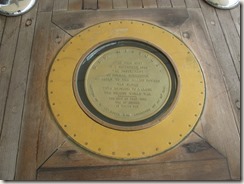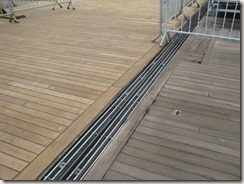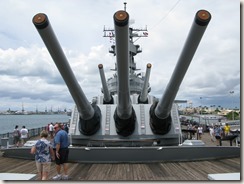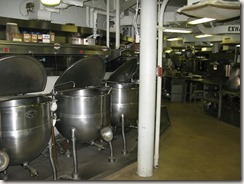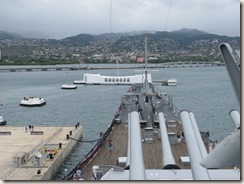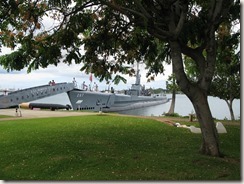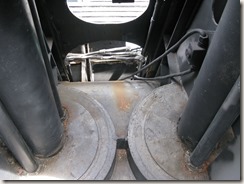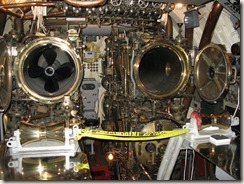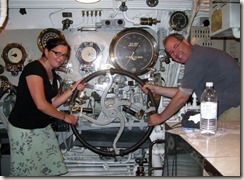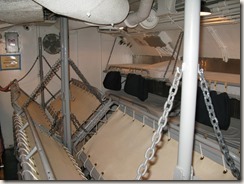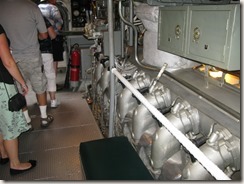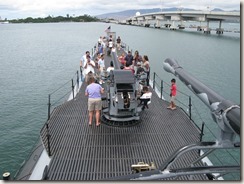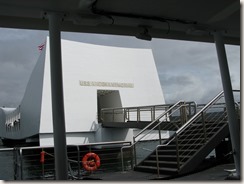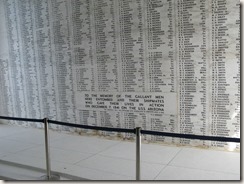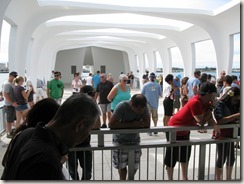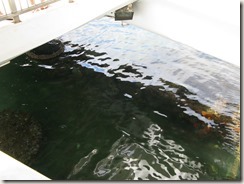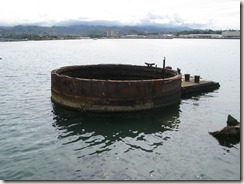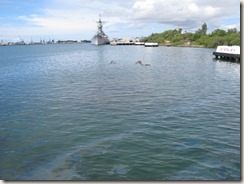Somehow we find each other
Through all that masquerade
Somehow we found each other
Somehow we have stayed
In a state of grace- Neil Peart, "Ghost of a Chance" from the Rush album,
Roll the Bones On August 1, Brenda and I celebrated our 20-year wedding anniversary -- and we've been together for 26 years. That's a long time, in human years (even more in dog years). But it's all flown by so fast. I suppose that's a good thing.
What started out as the two of us has now multiplied to include two boys, Cameron and Drew, and two cats, Rocky and Jasmine. We've stayed in Seattle the entire time, with periodic trips to Europe, Mexico, Hawaii, Canada, and many of the United States. Here's the story of how we met in the classic "boy-meets-girl" style (to protect the innocent).
Looking back now, I'm amazed at how many things had to align for us to come together.
University of Washington, Spring Quarter, 1986
Part I: Boy meets girl in the chemistry building
Boy with shaved head meets beautiful, dark-haired girl with stunning hazel eyes in an English class. The class is held in the Chemistry Library Building. Boy likes girl. Girl doesn't really like boy, as much as he can tell.
Girl finds out the boy is actually on the Crew team. Girl is interested in boy, but at this point the boy thinks she's not interested. He stops his pursuit.
Boy is homesick and depressed. It's his first year at the University of Washington as a freshman. He arrived tied to another girl from his home town, who dumped him after the first quarter. The second quarter, winter, was full of darkness and rain. In the third quarter, spring, he thought things would get better. But they haven't.
On a Friday night, boy goes out with his Crew buddies to try and forget. After a while, the boy goes back to his dorm room in Haggett Hall and sits in the dark. As he usually does when he feels this way, he goes to the pay phone and calls his Mom (collect, of course). He talks about how there's a dance going on downstairs, but he's too depressed to go. His Mom urges him to go, and like all good boys, the boy does what his Mom tells him to do.
At the dance, the boy finds a few friends. The music is loud. It's hard to talk.
Then, as if he's part of some film, the people in the room part. The girl with the dark hair and hazel eyes is standing there as if a spotlight is on her. They're drawn together. She asks him to dance. So they dance.
When the dance ends, a slow dance starts. Madonna's "Crazy for You."
They keep dancing. Then something happens: There's a connection, like electricity between them. After the dance, they talk more. The boy isn't sure if she likes him, but at least she's talking to him now.
Part II: Nothing to lose
By Sunday, the boy is wondering if he should visit the girl in her dorm room. He found out she's next door in McCarty Hall. But the boy is afraid of rejection. All his friends who have listened to him talk endlessly about his loneliness, give him courage. "What do you have to lose?" they ask.
The boy decides he doesn't have anything to lose. For some reason, he grabs a Richard Bach book, The Bridge Across Forever, to accompany him on this quest to find the dark-haired girl.
The boy takes the long, lonely walk to McCarty Hall. He has no idea where the girl lives; there are multiple wings and floors in the dormitory. But he seems to be guided -- like Luke Skywalker with the Force. He finally asks someone if they know the girl, and they point him to the correct room.
He finds the girl in her room. She seems happy to see him. She asks him about The Bridge Across Forever, and they talk about their love of Richard Bach. (Later, she would tell him that she thought he was there to pick up the book from someone else in McCarty.)
After a 15 or 20 minute conversation, the boy says goodbye, and he takes the short, happy walk back to his dorm. After months of walking in rain and darkness, he sees the light.
Part III: Survival of the fittest
Now the boy and girl talk more often -- in class or in the cafeteria. He's pretty sure she's interested in him, but he's been through this before.
One morning, the boy is playing the grand piano in the Haggett lobby just for fun. He's playing the sad piano riff to the Howard Jones song, "No one is to Blame." And though he's never really paid attention to the lyrics, they are appropriate for the moment:
And you want her, and she wants you
We want everyone
And you want her and she wants you
No one, no one, no one ever is to blame
He sees the girl walking up the stairs with a friend. She leaves the friend and comes over to talk to him. They discuss how a few of the Freshmen rowers are getting together that night to watch the Opening Day fireworks. Did she invite herself to come along? Or did he invite her? It doesn't matter.
Later, at the agreed-upon time, the girl shows up at his room. The boy is excited to see her, but he's surprised at how calm he is. They walk down to the Conibear Shellhouse with some other rowers. The plan is to take the Freshman barge out on Lake Washington to watch the fireworks.
But the varsity rowers crash the party. They tell the Freshmen rowers it's not their place to take out the barge. The upper-classman are going to take the barge out instead.
The boy is embarrassed at how his promise of fireworks on the water has fallen apart. They walk back to the dorms with the other rowers. His friends are all talking to the girl, trying to impress her. The boy starts to worry; he can't compete with the other boys, who are faster and stronger than he is in the boats. But one by one, the other boys drop away, until he's standing there with the girl and another rower.
The boy thinks the other rower isn't going to leave. He thinks he's going to lose the girl to him. But then the girl says something that makes it clear that she wants to be alone with the other boy, and the other suitor leaves.
Like many 18-year-olds, the boy doesn't understand the signals and says to the girl, "I have to go back to my room to wait for my parents. They're coming by tonight."
There's a long silence, and the girl says, "Well, I can come up and wait with you if you want."
He finally knows for sure.
Part IV: "Let's listen to Rush"
Now the boy and girl are sitting on the bed in the boy's dorm room (there's nowhere else to sit). They're talking. He asks if she wants to listen to some music.
She says, "Let's listen to Rush."
At this point in the story, it's important to note that the boy is one of the biggest Rush fans in the world. It is part of his identity. Only one other girl in his life has liked Rush.
Then she says, "I want to read the lyrics."
So they listen to "Tom Sawyer," and he talks about the lyrics.
There's a knock at the door. He expects to find his parents standing there, but instead he finds his ex-girlfriend -- the one who dumped him. When the ex-girlfriend sees the new girl sitting in the dorm room, there's a look of both recognition and disappointment. It turns out the new girl and the ex-girlfriend know each other (they went out dancing with a mutual friend).
The ex-girlfriend never comes by anymore, so clearly something's wrong. The boy is amazed that he actually feels bad for her, as he knows what it feels like when someone's not there when you need them.
She leaves, and he shuts the door.
After a few more Rush songs, there's another knock at the door. This time, it is the boy's parents. They're excited to meet this girl that their son has been talking about. They're relieved that their son seems to have found happiness. It's almost like they know -- the way parents can sometimes tell -- that this girl is the ONE.
After a few minutes, the boy's parents leave, and the girl and boy are alone. They turn out the lights and look out the small window to University Village below. They hold hands. They kiss a little. There's something so effortless about it, the boy thinks.
Somehow we found each other
Happy Anniversary, Brenda!

Labels: Events


